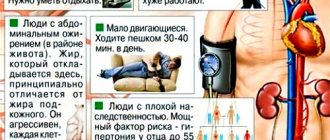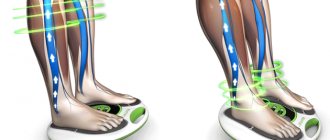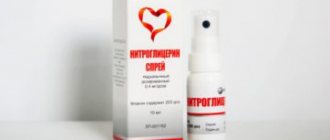Discomfort in the hearing organs occurs for various reasons. The ears become blocked when there is pressure on the eardrum from the inside or outside due to changing weather conditions, with hypertension or hypotension, due to some internal pathologies. With normal blood pressure, this condition can occur when a person rises above sea level or falls below it.
Causes of stuffy ears
If your ears are blocked, high or low blood pressure may be the cause. But before suspecting problems with blood pressure, it is necessary to exclude other factors of the disorder. So, blocked ears can result from:
- Otitis. During an inflammatory process in the ear canal, similar sensations often occur.
- Presence of sulfur plugs. If hygiene rules are not followed, wax accumulation occurs, which leads to ear congestion.
- Head or ear injuries.
- Inflammation of the nasal mucosa.
- Water or foreign body entering the ear canal.
- Severe nervous tension.
- Tumor processes.
- Hormonal changes during pregnancy and menopause.
- Use of certain medications.
- Prolonged stay in noisy places.
- Alcohol intoxication.
In addition to congestion, in the presence of such pathologies, additional symptoms may occur, for example, pain, fever, decreased performance.
If the above problems are excluded, pay attention to the pressure at which this symptom occurs. At the first sign of discomfort, use a blood pressure monitor.
Symptoms of the disease
We list the main symptoms that you should pay attention to. If they appear, you should immediately consult a doctor:
- The ear was blocked, there was tightness inside, the appearance of incomprehensible sounds and noises.
- Severe fatigue even from everyday activities, not to mention increased physical activity.
- Tingling, coldness of the hands and feet, fingers do not bend completely.
- Hyperirritability, conflict, aggression.
- Persistent headaches, migraines. Does not go away when taking medications.
These striking symptoms indicate the presence of pathological processes in the body.
Correct pressure measurement
It is generally accepted that a person’s normal blood pressure is 120 over 80. However, this parameter is individual for everyone, so the values may deviate slightly in one direction or another, the main thing is that the person feels good. It is important to determine exactly what is normal for you. To do this, it is necessary to take measurements on both hands during the day, but at the same time exclude factors that can lead to distortion of the indicators.
A tonometer is used for measurements, while an automatic device is more convenient. For the indicators to be correct, it is necessary:
- Before measurement, avoid drinking alcohol, strong coffee and tea, smoking, and physical activity.
- Take a comfortable position and relax. The working hand should be at heart level.
- Do not move or talk during the measurement process.
- Take readings from both hands.
If you deviate from the norm, it is likely that your ears are blocked due to pressure. If the indicators do not cause concern, then the reason for this condition lies elsewhere.
Characteristic symptoms accompanying pressure on the ears from the inside
Such symptoms can occur in people of different ages - from children to the elderly. They are in no way related to age-related changes in the body (with the exception of a number of diseases caused by age-related tissue degeneration and impaired functioning of the hearing organs, as well as the human vascular system).
The feeling that something is pressing on the ears from the inside, a feeling of stuffiness in the ears, an unpleasant impression of fullness and severe discomfort are not clear symptoms of any specific disease.
This problem can have many different causes or even a group of causes, the combination of which led to the appearance of such a disease.
Usually, when a patient comes to see a doctor, he lists a characteristic list of symptoms, which may vary from patient to patient:
- Feeling that the ears are tightly closed, as if blocked by a thick layer of cotton wool. Very often there is an impression that only one ear is blocked, while the other one functions normally. Other patients complain of congestion in both ears, but one may be more sore or “clogged.”
- Strong pressure, and patients feel as if the force is being applied from within. There is a feeling of distension, swelling of the head, an extremely unpleasant sensation that some force is pressing on the eardrums from the inside. This condition can be accompanied not only by discomfort, but also by painful sensations, nausea and headaches of varying intensity.
- There is a hum, noise, ticking and other various sounds in the head, sometimes insignificant, in some cases unbearable. This condition is very annoying and nerve-wracking for the patient, causing disruption of sleep and normal behavior.
- Headaches of varying degrees of intensity, from a slight sensation of pain in the temple or back of the head, dull diffuse pain to acute conditions when the slightest movement causes suffering.
- Dizziness, both associated with movement and appearing at rest, even with a slight change in body position.
- Nausea, constant or paroxysmal, usually not accompanied by attacks of vomiting.
- Intolerance to loud sounds.
- Hearing loss.
- Painful perception of bright light.
- Sound distortions (aberrations).
- Phantom sounds. The patient thinks that he hears the doorbell ringing, the sound of a boiling kettle, the knocking of a pot lid while boiling, the sound of a hammer, and other monotonous sounds that do not actually exist.
If the symptoms exist in a complex and have been bothering the patient for more than a day, it is necessary to urgently undergo an examination, first of all by contacting an otolaryngologist. However, the ENT doctor does not always clearly identify or characterize the disease, since such symptoms may be the result of neurological, vascular and other lesions.
Why is there a problem with blood pressure?
To understand why the disorder occurs, it is necessary to turn to physiology.
The hearing organ consists of:
- Outer ear. This includes the auricle and ear canal, through which sound vibrations are captured and transmitted;
- The middle ear, which includes the eardrum, three bones (incus, malleus, stirrup), Eustachian tube;
- The inner ear, which includes the cochlea, which converts sound vibrations into electrical impulses, and channels.
Sound vibrations are picked up by the outer ear, then transmitted to the membrane, three bones, which are located in the middle.
The eardrum has the following functions:
- protective;
- conductive;
- ensuring normal pressure.
There is air in the middle ear cavity. This structure is protected on one side by a membrane, and on the other side there is an Eustachian tube, which promotes air exchange and pressure equalization.
When you are in an area with high pressure, air enters the middle ear from the nasopharynx. When a person enters a zone of low atmospheric pressure, air enters the nasopharynx from the middle ear.
Ear congestion is precisely the pressure that affects the eardrum. In this case, hearing is impaired for some time, the membrane temporarily loses its elasticity. The cause is a disturbance in the pressure in the middle ear.
During pregnancy
Pregnancy is a special condition that leads to a restructuring of a woman’s entire body. And ears are no exception.
Due to the increased stress on the body as a result of carrying a baby, blood circulates more actively than usual. As a result, blood pressure rises. Vascular tone increases.
This leads to increased pressure on the eardrum, resulting in noise and ear congestion. This is not dangerous, however, you should report the sensations to your doctor.
After the baby is born, the symptoms will disappear.
How does atmospheric pressure affect
Sudden changes in atmospheric pressure also lead to blocked ears. This is possible when traveling by plane, diving, etc.
The level of pressure at which a person experiences this unpleasant symptom is an individual indicator. But the most sensitive in this regard are people who have disturbances in the functioning of the cardiovascular system.
In addition, a similar condition may appear as a reaction to weather changes, especially in hypertensive and hypotensive patients. It has been noticed that people who have low blood pressure experience stuffy ears and other symptoms of malaise during a cyclone characterized by high humidity, precipitation, and cloudiness.
In hypertensive patients, on the contrary, their health worsens with the arrival of an anticyclone (dry, cloudless and windless weather).
Diagnostics
To find out the cause of ear congestion, diagnostic measures should be carried out. They begin with interviewing the patient. The doctor should know the following:
- when your ears are blocked;
- character: one- or two-sided;
- How long does the congestion episode last?
- How long ago have such complaints arisen?
- What other symptoms are they accompanied by?
The doctor can first orientate himself and find out the causes of the disease. The presence of fever, symptoms of intoxication, ear pain, and the unilateral nature of the disease indicate acute otitis media or other infectious inflammatory diseases of the ENT organs. In this case, an examination by an ENT doctor is required to examine the ear septum and nasopharyngeal mucosa. Sometimes fluoroscopy of the sinuses is needed. The presence of pus in the cavities and sinuses, increased fever and intoxication is dangerous for the patient. Pus can spread through the passages, rise to the venous sinuses of the brain, and cause sepsis. You should immediately consult a doctor.
The combination of congestion with changes in blood pressure, dizziness, and headaches indicates a vascular cause. The blood pressure level affects the permeability of the hearing organ. Also causes negative symptoms and signs.
The simplest diagnostic situation is the occurrence of congestion against the background of a decrease in atmospheric pressure. The condition for the appearance of such complaints is a change in pressure outside the hearing organ. Changing the shape of the ear septum provokes a feeling of constant noise and congestion.
The cause of such complaints, caused by pathology of the spinal column, is revealed by fluoroscopy of the cervical spine in three projections. The correct diagnosis is confirmed when the unpleasant ear symptoms disappear during successful treatment of the pinched nerves.
Ear congestion can be a sign of migraine. Especially her auras. Until the patient is accustomed to such conditions, he will not be able to trace the connection between a migraine attack and ear symptoms. Therefore, when diagnosing, it should be about migraine.
The most dangerous cause of ear complaints is the development of a tumor. It can be localized in the middle or inner ear, as well as in the brain. Therefore, any symptoms that last too long are subject to careful diagnosis and consideration by specialists from various medical fields.
Important! Oncological diseases are successfully treated with timely diagnosis.
Ears blocked due to pressure: what should the patient do?
If such a phenomenon appears occasionally during sudden changes in atmospheric pressure, there is no need to seek help from specialists. After eliminating the provoking factor, the problem disappears on its own after some time.
You should immediately seek medical help if, in addition to blocked ears, the patient experiences:
- persistent hearing loss;
- impaired coordination of movements;
- headache attacks accompanied by blurred vision;
- pain in the heart area, palpitations, rhythm disturbances;
- nausea, severe headaches;
- episodes of loss of consciousness.
Diagnostic measures
If your ears are blocked, first of all you need to visit an ENT specialist. If no problems are found, it is necessary to examine the vessels.
This can be done using:
- Duplex scanning of head and neck vessels. With the help of such a study, the speed of blood flow is assessed and the structure of blood vessels is studied. During the procedure, an image of the vessels being examined appears on the monitor.
- Vascular MRI. Allows you to detect vascular abnormalities and helps determine whether there are problems with intracranial pressure.
If you suspect that the cause of the disorder is low or high blood pressure, carry out standard tests used in such situations:
- measure blood pressure levels;
- carry out blood and urine tests;
- They do an electrocardiogram.
Therapy methods
This particular symptom needs to be treated if it is caused by ear diseases. The main cause should be eliminated if changes in blood pressure lead to stuffy ears. High or low blood pressure are conditions that require treatment. But the approaches will be different.
For high blood pressure, the use of beta blockers, ACE inhibitors, and calcium antagonists is recommended. If the blood pressure is low, hypertensive drugs are prescribed.
In addition, the patient should use drugs that strengthen blood vessels: products with potassium, magnesium, vitamins C and group B.
If the cause of hypertension or hypotension is a heart defect, surgery will be required.
If high blood pressure is caused by problems with the kidneys, the doctor will recommend taking anti-inflammatory and antibacterial drugs.
A little about the problem itself
The human ear, despite the apparent simplicity of this organ, is a very complex mechanism. It contains a large number of elements, each of which performs its own function. And a defect in one of them can lead to hearing problems.
The Eustachian tube is located in the ear. It is a conductor between the nasopharynx and the auditory organ, and performs the function of equalizing pressure inside the ear. However, if for some reason this function fails, then the eardrum is “retracted” into the interior. This leads to specific sensations, which are referred to as “ear congestion.”
Ear congestion is divided into several types. It depends on the type of this unpleasant symptom.
Types of ear congestion:
- Both ears can be blocked at once, or only one auditory organ can be blocked;
- Frequent and rare blockage of the auditory organs;
- Constant congestion and discomfort, which is replaced by relief.
Most people are familiar with this condition. However, it can also be identified by some other symptoms.
Symptoms of ear congestion:
- In this condition, the functioning of the auditory organ deteriorates. A person either hears worse or temporarily loses this ability.
- A person begins to perceive his voice differently. It seems different and subdued.
- In exceptional cases, there is a feeling of itching and a feeling of the presence of something extra in the ear. Typically, this symptom occurs when there are wax plugs in the ear.
- Extraneous sounds may also occur in the ear. This may be hissing, whistling, tapping, crackling, etc.
- Usually there are also problems with coordination of movements, heaviness and pain in the head, as well as anxiety.
These signs indicate that a person has problems with the ears. However, the reason for this does not always lie in a pathological change in the auditory organ.
Often the ears become blocked due to changes in external pressure. This happens when there is a sudden rise or fall in altitude relative to the sea. That is why this situation occurs in most people when moving on an escalator and taking off on an airplane.
However, the reason may also be hidden in internal pathologies. In this case, ear congestion most often occurs with very low or very high blood pressure.
How to relieve congestion due to high blood pressure at home
If your ears are blocked from high pressure, take a horizontal position. Lie quietly for some time, breathing deeply. A hot bath for your hands and feet may help. If the condition does not improve, take a blood pressure medication. If even with the help of medication it was not possible to normalize your health, call an ambulance. Medical help is also necessary if your ears are blocked or your nose is bleeding.
Low blood pressure and congestion
There is no effective drug that would help raise blood pressure. If you have low blood pressure, stuffy ears, and other signs of illness, try drinking Citramon, which contains caffeine. A cup of coffee or dark chocolate helps many.
You can increase your blood pressure with lemongrass decoction, tea with honey and ginger. Walking in the fresh air, massage of the earlobes, hands and feet are helpful. If your ears are blocked and you feel dizzy, and your blood pressure cannot be raised by any means, you will have to call an ambulance.
Treatment
Treatment for ear congestion is based on the reasons that led to it. It is represented by different directions of influence. To relieve symptoms of congestion and completely treat the patient, the following effects are used:
- pathogenetic therapy aimed at the cause of the condition;
- symptomatic treatment;
- preventive actions.
To influence the causes leading to ear congestion, drugs that affect pressure or therapy aimed at relieving infectious inflammation in otitis media are used.
If your ears are blocked due to high blood pressure: what should you drink in this case? If the blood pressure is high, antihypertensive therapy is used - diuretics, ACE inhibitors and others. To increase low blood pressure during hypotension, adaptogens (ginseng, lemongrass), caffeine-containing products and vitamins are used. To treat otitis, anti-inflammatory therapy, antibiotics, antispasmodics, and rheological agents that improve blood circulation are prescribed. In severe cases, the eardrum is perforated and the purulent cavity is drained.
The most difficult is the treatment of ear congestion that occurs due to cerebral vascular dystonia, atherosclerosis, and vertebral artery stenosis. A risk factor is chronic eustacheitis. In this case, the basis of therapy is drugs that improve cerebral circulation, neurometabolic agents, daytime tranquilizers, sedatives, and vitamins. As a treatment aimed at normalizing blood circulation, physiotherapy is used in the cervical spine.
Physiotherapy
Statins are used to normalize blood lipid composition. The treatment is long-term and is carried out under the control of lipid profile and liver enzymes.
If congestion occurs due to a decrease in atmospheric pressure outside the middle ear cavity, which leads to retraction of the eardrum, a blowing procedure should be performed. To do this, pinch the wings of the nose with your fingers and make a movement similar to blowing your nose. This should be done carefully and slowly. In this case, increased congestion may occur. The other ear may also be clogged. Then you should repeat the procedure more actively. A positive result is a “click” sensation, after which congestion disappears and normal auditory conduction is restored.
On a note! Changing the position of the head, tilting it forward or to the side may help. During the flight, you can drink water in small sips - this restores permeability.
In cases of chronic ear congestion without vascular or acute inflammatory causes, a procedure for instrumental blowing of the auditory tubes is performed. This type of treatment is performed for chronic eustacheitis, when, due to a constant inactive inflammatory process, the Eustachian tube “sticks together” and the conduction through it is disrupted. In this case, the otolaryngologist performs the procedure of blowing the ears and auditory tube according to Politzer-Belogolovy. Otherwise, this method of influence is called “steamboat”, because to help with it, the patient is asked to pronounce this word syllable by syllable.
Information on the topic is located at the link:
For treatment, air is introduced into the middle ear cavity using a balloon and under the control of an otoscope. Before this, the nasal cavity and ear are cleared of mucus, and antiallergic drugs are administered to relieve swelling. Having inserted the otoscope into the patient’s external ear canal, the doctor connects it with his own. During the manipulation, the doctor hears the same as the patient. While performing the procedure, the doctor hears noises and clicks, thus assessing the patency of the patient’s auditory tubes and monitors the moment of their opening.
Politzer blowing
The treatment is complex and includes several procedures. The use of anti-inflammatory and antispasmodic drugs. Blow out the ears 5 – 10 times with an interval of one or two days. During pregnancy, the use of this method is possible with the permission of the observing gynecologist. Treatment takes up to three weeks. The result is the restoration of conduction through the auditory tube, the balance of atmospheric pressure with the middle ear, and the disappearance of symptoms of congestion.
Allergic congestion is treated with antihistamines, cromones. Pseudoephedrines are used to relieve swelling in the auditory tube. The drugs are taken orally (theophylline) or in drops or sprays that act directly on the nasopharyngeal mucosa. The swelling goes away from the entire mucous membrane, the patency of the auditory tube is cleared.
Untimely treatment of chronic eustacheitis leads to the formation of adhesions. They interfere with the free flow of air. In this case, it becomes impossible to equalize the pressures.
Attention! Breathing exercises with holding breaths, as well as periodic independent blowing, help well.
To prevent ear congestion, acute diseases of the middle ear and sinuses (sinusitis, frontal sinuses) should be treated promptly. Drafts and hypothermia should be avoided. It is effective to rinse the nose with saline solutions (“No-salt”, “Marimer”), as they promote cleansing.
What to do if blood pressure changes
To stabilize the condition and get rid of congestion, it is recommended to yawn heavily, while straining the nasopharynx area. You can exhale slowly with your nose closed, this fills with air and opens the Eustachian tube. Swallowing with your nose closed also helps. You can tilt your head towards the problematic ear, pinch the ear canal with your finger, and then quickly release it. Some people claim that mints or chewing gum help relieve the problem.
Preventive actions
If your ears become blocked due to pressure, you need to take care of prevention. To this end, you should follow the recommendations to help maintain normal blood pressure:
- Adhere to the principles of proper nutrition. Consume only natural and healthy foods, maintaining a balance of proteins, fats and carbohydrates. It is also necessary to monitor your drinking regime, drinking at least 2 liters of water per day.
- Set aside about 2 hours a day for leisurely walks in the fresh air.
- Don’t forget about physical activity, especially for those who lead a sedentary lifestyle. Breathing exercises are also useful.
- Avoid stress, think positively. If necessary, you can even take a sedative.
- Avoid hypothermia.
- Visit your doctor in a timely manner and follow all his recommendations.
If the problem of ear congestion becomes persistent, consult a doctor for a thorough diagnosis. It is very important to establish the cause that provokes the occurrence of such a violation. If the ears are blocked due to pressure, an effective treatment regimen is needed, selected by a specialist, taking into account the patient’s age and the presence of concomitant pathologies.
Prevention
In order not to resort to long-term treatment and avoid unpleasant symptoms, you should adhere to the following rules:
- Keep blood pressure under control.
- To avoid jumps, change your diet, switch to a healthy diet.
- To refuse from bad habits.
- Do not be nervous.
- Get more rest.
The most important rule is to listen to your body and if you notice any alarming symptoms, consult a doctor immediately. Only treatment under the supervision of a specialist will be fruitful.











